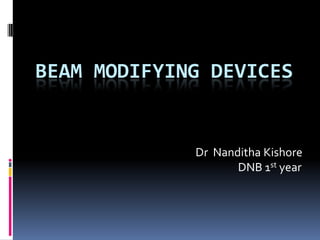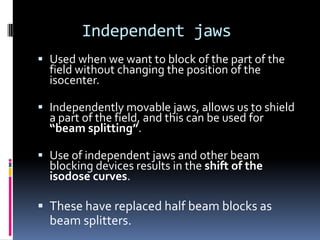This document discusses various beam modifying devices used in radiation therapy. It describes shielding devices like shielding blocks, custom blocks, and multi-leaf collimators that are used to protect critical structures. Compensators are used to even out skin surface contours. Wedge filters produce a tilt in the isodose curves. The document discusses different types of wedges and factors to consider when selecting a wedge. It also covers other devices like bolus, spoilers, and electron beam modifiers.



















































































